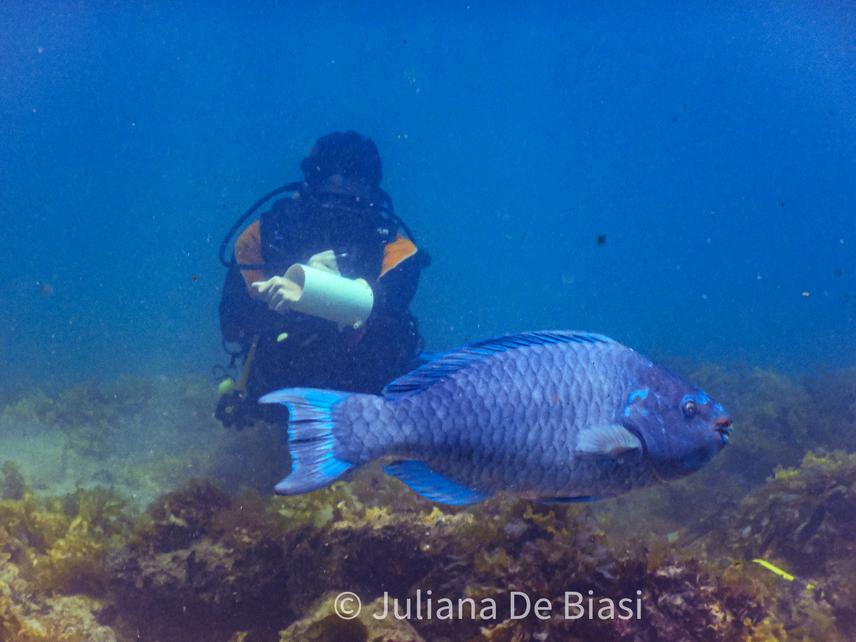Article featuring the project.
Ramón Hernández Andreu
Evaluate how functional groups can be influenced by the protection provided by marine protected areas (MPAs), based on measures of functional diversity, inside and outside MPAs, to understand what are the key species of each functional groups in coral reefs, as well as establish the relationship between the species that make up each functional groups, and to analyse if there is ecological redundancy among species within functional groups , which are determinant of resilience and ecosystem functionality.

© Juliana De Biasi.
In theory MPAs can benefit the entire ecosystem by restoring the community structure (size, abundance and number of species), providing habitat quality and enhance ecosystem resilience. Therefore by studying the relationship of functional groups and MPAs we expect to find results that help us to describe how protection affects the structure of the community (fish and benthos), which species are more influenced by the protection and how important they are in the functioning of the ecosystem, how functional redundancy is affected by protection, how the loss of key species can affect resilience, how efficient are local management measures for coral reef conservation.
We expect to provide basic but unpublished knowledge on the relationship between the community of benthic organisms and fish of Brazilian coral reefs, and to assess how the protection status can be determinant for the proper functioning of community interactions. By revealing the most important links in the coral reef ecosystem functioning we could propose more oriented actions to preserve one (or multiple) species or habitats. Besides, the efficiency of management measures on coral reef health will be evaluated and the results reported could empower society to claim for solutions and better coastal conservancy.